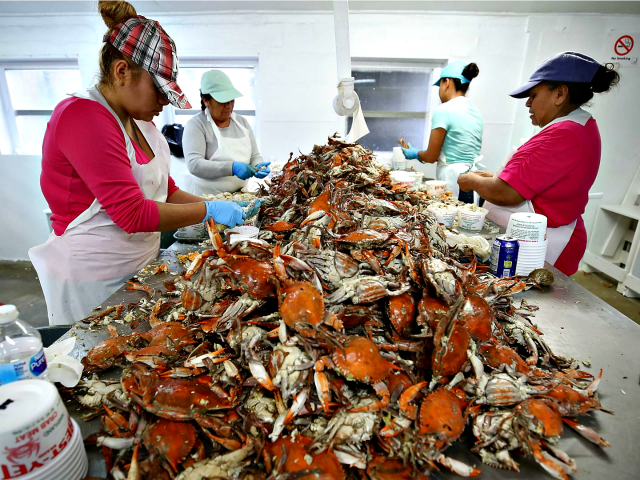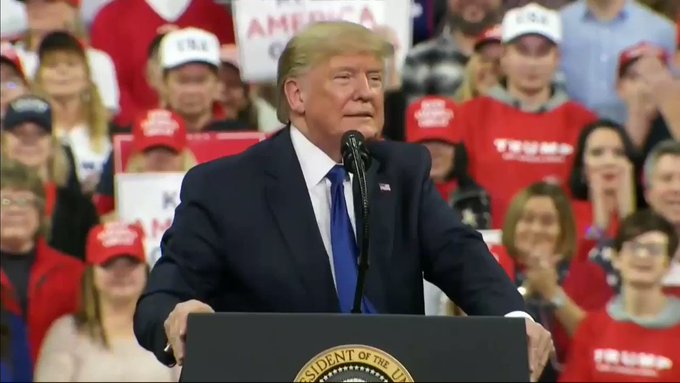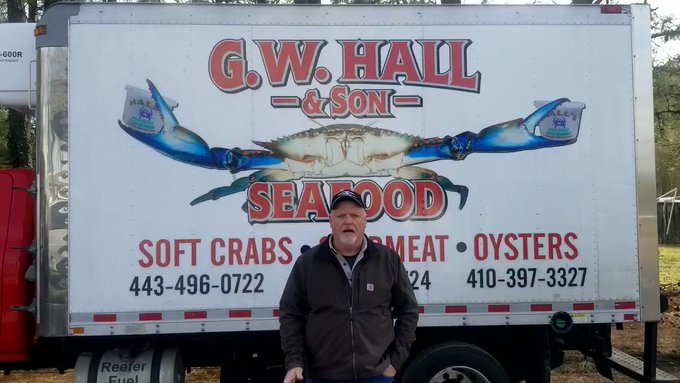Audio Transcript
Brian Anderson: Hello again everyone, this is Brian Anderson, the editor of City Journal. Joining me on the show today is Christopher Rufo. Chris is a City Journal contributing editor and a documentary filmmaker based in Seattle. He's also a fellow at the Discovery Institute. He's here to talk about his latest feature essay for City Journal. It appeared in the Winter 2020 Issue and it was released online over the weekend. It's called “
The Moral Crisis of Skid Row.” You can check it out on our website and we'll link to it in the description. Embedded in the article is a three and a half minute film that was shot by Chris on location on Skid Row and you want to see that for yourself. That's it for the introduction. We'll take a quick break and be back with Christopher Rufo.
This is Brian Anderson, the editor of City Journal. Joining us from his home in Seattle today is Chris Rufo. Chris is a documentary filmmaker, a research fellow at the Discovery Institute Center on Wealth and Poverty and a City Journal contributing editor. You can follow him on Twitter
@realchrisrufo. Chris is here to talk about his latest essay for City Journal. It's on Los Angeles's addiction epidemic, which is feeding a very significant homelessness problem. The essay’s called “
The Moral Crisis of Skid Row.” Chris, thanks for joining us.
Christopher Rufo: It's great to be with you.
Brian Anderson: You note in your essay that the firehouse near LA’s Skid Row is one of America's busiest. It's responding to something like 35,000 calls for service a year, and you're also confronting on Skid Row record numbers of overdoses and mental health cases. So obviously it's a kind of out of control neighborhood in some ways. Can you describe what you witnessed when you went down there to do some reporting? How much time did you spend there and whom did you meet?
Christopher Rufo: Yeah, I spent about a week down there and I met with a wide range of people, I tagged along with a Police Sergeant of the LAPD. I went to the Harm Reduction Clinic and talked to people who were serving in a medical capacity. Then I hit the streets with addicts and former addicts to get a ground level view of what was happening, and it's really astonishing in the city of Los Angeles, which is obviously a global superstar city, you have something that is in many ways worse than third world conditions. The Police Sergeant that I was talking to, he had served overseas in the United States Marine Corps in war zones, and he said the situation in Skid Row is the most desperate he's seen in the entire world.
I think that the reason that's true is because you have hyper concentration of social pathologies in a very small area. Skid Row is only 5 by 10 blocks, but it's home to more than 12,000 homeless drug addicts every year. That is just an unbelievable concentration that makes it difficult to maintain public order and even more importantly, difficult for people to really get a step up and lead themselves on a path to a better life.
Brian Anderson: You mentioned 12,000 people, now that's not people actually there year-round, that's homeless people who are drifting in and out of the area, right?
Christopher Rufo: Yeah, that is, that's over the course of a year. The estimates on Skid Row vary, some people say there's about 2,500 people that are sleeping on the streets at any given time. Other people estimate it as high as 8 to 10,000. I think the best estimates, it's probably around 2 to 3000 people at any given time. But again, it's a rotating population that drifts in and drifts out. So there's a high level of transients, and one of the things that I think was really shocking and I heard this both from law enforcement and from people who were formerly homeless on Skid Row, is that it's really delineated by territory.
Each block or each section is controlled by criminal street gangs from South LA that use it as a base of operations for drug dealing, property crime, prostitution. It's really kind of criminally organized favela system that is enabled, and then in many cases, I think we can make the argument perpetuated by the public policies of centralization that have been really the dominant approach in Los Angeles for the past few decades.
Brian Anderson: Well, we did an article at the magazine, I guess it was over a decade ago now, by Heather McDonald, which described a turnaround that was taking place on Skid Row. The conditions there, especially when it came to crime, were improving. This was when Bill Bratton was police commissioner of Los Angeles. In talking to people to report your story, the sense you were getting is that things are getting worse, they're not better.
Christopher Rufo: Yeah, much worse. And I think that if you look at the Heather McDonald's piece, that lays out the progress that was being made at that snapshot in time, it's pretty remarkable. There was absolute progress and the data shows that from the time, but what happened was a few things. First of all, the kind of broken windows policing in LA, was called the Safer Streets Initiative, it met a tremendous amount of resistance from progressive activists who were concerned about criminalizing homelessness. Unfortunately there's really been this debate from homelessness kind of activist community from civil libertarians that don't want any restrictions on public camping, public drug consumption and want to really push back against what they view as over-policing or criminalizing non-criminal activity.
But the problem is that there's really a cause and effect relationship that you see as they were implementing Safer Streets Initiative, you see a pretty significant reduction in crime and disorder, even the number of people on the streets and as they loosened it up and slowly really abandoned that approach, you seen the numbers climb up and on top of that, starting in about 2010 to 2015 you have a methamphetamine epidemic that is really just dousing, kind of gasoline on the flames of this problem and you're seeing a record numbers of methamphetamine overdoses, heroin overdoses, that is really compounding this problem and making it extremely difficult to tackle.
Because as many people know, methamphetamine is really one of the most dangerous drugs, you take someone who might already be in a desperate situation, you have them on methamphetamine, which can induce psychosis, cause paranoia, hallucinations, violent behavior, and then you put it in the hothouse of thousands of people who are dwelling on the streets, heavy concentration of criminal activity and it's really explosive. That's what you hear from law enforcement, from first responders, they're burned out because they're taking hundreds of calls a day in many cases, in a very volatile part of town that's really been cordoned off from the rest of LA.
There's a tacit understanding that policymakers have made this wager that if they can geographically isolate the problem in places like Skid Row, they don't have to address some of those fundamentals, and I think that what I saw on the streets, the human despair and tragedy, I think really goes to show that, that approach isn't working and it's reaching a point of crisis.
Brian Anderson: As you note in your essay, progressive leaders across the country, healthcare workers have been embracing a notion of harm reduction as a way of dealing with drug addiction. Is that prevalent on Skid Row and what is your view of its effectiveness?
Christopher Rufo: It is, I visited with the Center for Harm Reduction, which is the central point for needle exchange, needle distribution, harm reduction services and organization that's also interested in opening a safe injection site, and I'm really struck in two ways as we look at harm reduction. First, I think we have to acknowledge, especially from the conservative perspective that in some ways harm reduction does work. Harm reduction I think has a very clear record of reducing the transmission of infectious diseases. I think it has a record of reducing things like HIV. So, in a limited sense, harm reduction does work and I think can have the clinical evidence-base to show that. But in another sense, harm reduction is what I think of as a brutal calculus. They're measuring harm reduction against hypothesized worst case scenario.
But what harm reduction doesn't do and doesn't have a good record to show in places like Skid Row in places like the Downtown Eastside in Vancouver, in places like the Tenderloin in San Francisco, it doesn't have a record of showing of reducing the absolute numbers of addiction, overdoses and overdose deaths. In fact, in all of these cities, addiction to total number of people on the streets, the total number of people addicted, total number of people overdosing and dying from overdoses has gone up and up and up over the past decades. So, while you can say, well, it could be worse, I think that we have to do better than that. I don't think that's really a relevant baseline or really a fair baseline for public policy.
Unfortunately harm reduction if it's not practice within certain limitations, can lead to enablement, can lead to a policy regime of permissiveness that tolerates and enables massive dysfunction concentrated in places like Skid Row. So, while my heart goes out to the people who are working on the front lines every day, you can see the compassion, the care, and the kindness that they extend to people on Skid Row. I'm afraid that if you look at it in absolute numbers, the record of harm reduction isn't as good as people claim and certainly hasn't demonstrated the ability to turn the tide and to change things in a fundamental way that will need to happen in order to really change the trajectory of Skid Row.
Brian Anderson: The phrase “Housing First” is one of the most common used by activists in LA and other cities when they discuss homelessness issues, and in 2016 LA voters approved, I think $1 billion in new spending, maybe even more with the goal of building, I think it was 10,000 affordable housing units. So far, though, the results of that project to build these new apartments have been pretty unimpressive, right?
Christopher Rufo: They have, and I think that there are two essential problems with Housing First, as you mentioned, they had the goal with $1.2 billion in taxpayer funding to construct 10,000 units. Three years later, they had only opened 72 units, they were costing between 6 and $700,000 a piece, and almost half of those costs, about 40% were eaten up by consultants and regulatory costs and lawyers and what is called soft costs. So, on a practical side, the city of Los Angeles, the County of Los Angeles has demonstrated that they can't actually construct units quickly on time or on budget, but there's actually a deeper problem. I think that the slogan Housing First sounds good, but the real question is Housing First and then what?
What do you do with people who in many cases have a severe addiction to heroin or methamphetamines, have severe mental illnesses like schizophrenia or bipolar disorder, have no source of employment or independent income and are really disconnected from all of those family and social bonds that create a stable sense of meaning in their lives? Housing First, while it shows the evidence and the academic evidence even shows that you can retain people year over year at about an 80% rate. So if you take someone off the streets, put them in a Housing First apartment, 80% of those people will still be in that housing unit over the course of a year, which is fairly good.
But in a sense, it's not surprising, if you give someone a free apartment, you could expect a high level of retention, maybe even higher than 80%. But the real problem and the fundamental question that the political leaders aren't acknowledging or addressing is that, even the evidence from people who support Housing First, even the academics who I think are open to it, that have studied the problem, it shows that in the vast majority of studies, there's no improvement in substance abuse, there's no improvement in mental illness and psychiatric systems.
And in many studies, actually those symptoms tend to get worse, so that as you bring people off the streets, in one study recently in Ottawa, Canada of a Housing First unit, the people who entered Housing First actually had worse outcomes than a control group of homeless people who were left on the streets, which is just an astonishing thing that you have housing, you have services available, but unfortunately not a very good way to deal with some of those pressing human challenges and improve the lives of the people inside the physical structures.
Brian Anderson: Ultimately, you're arguing that the homelessness crisis in LA and elsewhere is a moral crisis. Say a little bit more about that because it does have implications for how we try to address the problem.
Christopher Rufo: Yeah, I think that we can't hesitate to call it what it is, and I think it's a moral crisis on two levels. First, certainly what I saw on Skid Row is thousands of people dealing with profound personal moral crises in their lives, and what I mean by that is, these are conflicts of family, of choices, of an individual despair, and it's a moral crisis in the sense that you're dealing with these key moral issues. In many cases, there's high levels of drug abuse, prostitution, crime and violence, these are really moral concerns. You see people that have a desperate need for social connection and family, and real sense of community that I think is ultimately a moral concern. But that's not to say that these are people who are universally having personal moral failings. Obviously, this is a moral failing of the wider community.
At the same time, I think there's another higher level that we can see a moral crisis and that's at the level of public leadership. On Skid Row, I think that, if you look at the amount of resources that are devoted to this problem, I think it's really a moral scandal that the public leadership and the city and County of LA have it at their disposal more than $5 billion to spend on this crisis. But they've failed to address the complex real world challenges and hidden abstract ideas of constructing housing or taking on this challenge, but have failed to wrestle with those concrete issues that you see on the streets. I think that it's really a moral scandal that you have a public infrastructure that has adequate resources to address the crisis but has failed to do so in a meaningful way.
I think it's an abdication of leadership and most importantly an abdication of moral leadership to not be able to call out what is really happening and actually address it. I think that if you look at even Mayor Garcetti's press releases over the last few years, they've increasingly been geared towards ideological concerns, abstract concerns, identity politics concerns. As you can see him and the people around him disengaging from the more difficult challenges, and I think it'll take the public really to reject that kind of leadership by abstraction and demand accountability for the real human issues that are plaguing the city.
Brian Anderson: Chris, you've got a new full length documentary that you finished and rolling out, do you want to take a moment just to talk about it and where our listeners can go to find out more about that?
Christopher Rufo: Absolutely. So, I spent the better part of five years directing a documentary that will be released nationally on PBS later this year, about three forgotten American cities. And I'm really looking at American poverty through the lens of Youngstown, Ohio, Memphis, Tennessee, and Stockton, California. I think what I learned making this film and what I try to convey through the stories is that, we often think of poverty as an economic problem, but really it's much like Skid Row, honestly, it's a social, cultural and human problem.
So I followed families over the course of about three years that are struggling to make it through this really brutal reality of these fallen cities. I also suggest a way forward for the revitalization of faith, family and community and economic opportunity. So, if you're interested and you're listening, you can learn more about the film at americalostfilm.com and watch the trailer, purchase the film, even get involved and host a screening of your community. So, I'm very excited about that, I think that, a lot of these lessons, Skid Row is the end point of a lot of these lessons. So you're seeing American poverty in these forgotten cities and I'm hoping that they can avoid the fate of really the most desperate parts of places like Skid Row.
Brian Anderson: Don't forget to check out Christopher Rufo's work on the City Journal website,
www.city-journal.org, his latest essay is called the Moral Crisis of Skid Row. We'll link to his author page in the description and you can follow him on Twitter
@realchrisrufo. You can also find City Journal on Twitter
@CityJournal and Instagram
@cityjournal_mi. And always, if you like what you've heard on the podcast, please leave us a rating on iTunes. Thanks for listening, and thanks very much Chris for joining us.
Christopher Rufo: It's a pleasure.








